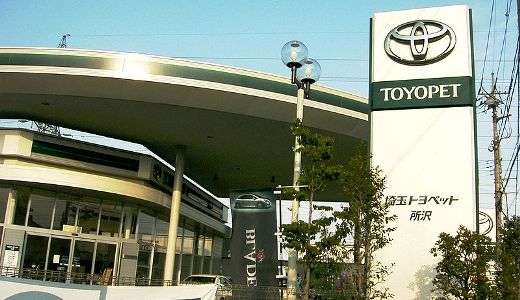
Toyota Motor Corporation, the largest auto manufacturer in the world, has been rocked by its massive recall of more than 10 million vehicles across the world. When Toyota CEO Toyoda Akio was summoned to the U.S. Congress, he admitted that the company expanded its business so quickly that it cannot foster the needed skilled human resources. Documents indicating that the carmaker put profits before customer safety were also discovered in the United States.
Back in 2005, people called that year’s general election campaign the “Koizumi Theater.” The powerful patron of the “Theater” was the Japan Business Federation (Nippon Keidanren), the control tower of Japan’s business society. The chairman of Nippon Keidanren at that time, as a matter of fact, was then Toyota Motor Corp Chairman Okuda Hiroshi.
Painful ‘reform’
In the final days of the election campaign, then Prime Minister Koizumi Jun’ichiro was canvassing in Toyota City in Aichi Prefecture, the Toyota Motor stronghold as indicated by the city name. Anticipating the victory of the “Koizumi Theater” in the election were Toyota Motor executives including then Vice Chairman Cho Fujio, who was also the No.2 leader of Nippon Keidanren. Toyota Motor Corporation with the two top business federation leaders gained an enormous influence not only in business circles but also in politics.
Prime Minister Koizumi was pushing ahead with the so-called “structural reform” policy with strong support from business circles. Koizumi stated, “Opposition forces to my ‘structural reform’ policy are specific industries, politicians representing special interest groups, and in a sense, everyone.” He went on to say, “The reality of the ‘structural reform’ policy requires people to endure ‘pains’ for a while.”
At that time, Toyota Motors was enjoying a leap in its operating profits to 1.12 trillion yen. In 2007, it eventually became the first Japanese corporation to make more than two trillion yen in operating profits.
The strongest promoter of the “structural reform” policy, Toyota Motors, expanded its business at an accelerating pace. In proportion to this, there was an increase in the number of complaints about the sudden unintended acceleration of Toyota vehicles in the United States.
Involvement in national policies
Toyota Motors was founded in August 1937. Under wartime economic control, Toyota was connected deeply with wartime Japan’s policies. At the request of the then Ministry of War, Toyota produced standardized military vehicles and delivered 198 amphibious vehicles to the Japanese Imperial Army between November 1943 and August 1944. World War II ended in 1945. However, in 1950, another chance for quick profits came for the automaker. The Korean War broke out. Toyota Motors was again awarded with special procurements for the expanded demand from U.S. occupation forces stationed in Japan for supplies and services associated with the outbreak of this war.
In this manner, Toyota Motors has maintained a cozy tie with power to this day.
Karoshi, death from overwork
“For the absolute elimination of waste,” Toyota introduced a production system known as the “Toyota Production System (TPS)” in 1973 when the oil crisis started.
Under this system, Toyota forces its workers to work extremely long hours. This causes death from overwork, karoshi. The TPS consists of two systems. One is the so-called “just-in-time” system under which the precise number of auto parts has to be delivered at the right place at the right time. Another system is the so-called “kanban” system which is the way in which “just-in-time” is achieved. Pushing severe cost reduction measures onto small- and medium-sized suppliers, Toyota made enormous profits and amassed a huge amount of internal reserves.
In November 2008, another shock hit Japan. This was called the “Toyota Shock.” At a news conference to announce its quarterly earnings figures, then Toyota Vice President Kinoshita Mitsuo said that Toyota plans to cut 5,800 fixed-term contract jobs. Many auto manufacturers and electronic makers followed this move. Due to large manufacturing companies’ massive dismissal of temporary workers, the employment situation in Japan deteriorated.
At a public hearing in the U.S. Congress, Toyota President Toyoda Akio said, “The pace at which we have grown may have been too quick. We pursued growth beyond the speed at which we were able to develop our people and our organization. I regret that this has resulted in the safety issues now under concern.” Instead of developing skilled workers, Toyota actually took the initiative in scrapping a number of temporary jobs.
TPS is designed to eliminate waste, including over-production, any wasteful motion of operators or machines, waiting time of operators or machines, conveyance, processing itself, inventory raw material, and correction rework and scrap. The number of Toyota recalls in 2001 was 45,889 units, but in 2008 it jumped to over one million, up 25 times. Last year, over 10 million Toyota products were recalled all over the world.
Profit is top priority
It seems that Toyota abandoned the principle of product safety for the sake of cost reduction. Labor analyst Sasaki Shozo pointed out, “Under the policy to cut production costs, Toyota reduced the time frame for developing new products and took such products to the market without thoroughly examining product safety. This clearly shows Toyota’s attitude of putting top priority on profits rather than safety. Toyota should use its large amount of internal reserves to provide secure jobs for temporary workers and to set up an appropriate unit price of auto parts to suppliers.












Comments